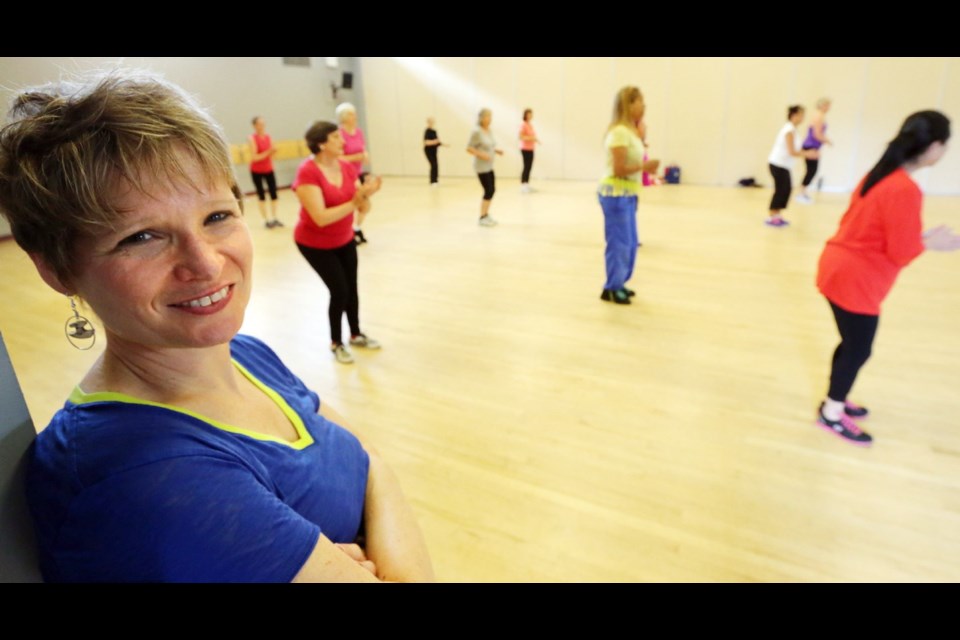Ali Ptolemy said it wasn’t the 30-pound weight loss that made her doctor look suspicious. It was the sudden decrease in her blood pressure.
For about the past two years, the 66-year-old Ptolemy has been doing Zumba, exercise classes based on Latin-American music. So at her most recent checkup, the doctor knew right away something was different,.
“I didn’t even need to tell him I was doing something,” said Ptolemy. “He asked and I explained what it was and he said: ‘OK, just keep doing it.’ ”
Ptolemy and her fellow Zumba devotees are proof of what medical research is increasingly starting to show. Dance or music-based movement goes above and beyond simple exercise to improve health. In other words, exercise is great but there is something about music-based movement that offers a little extra kick.
For example, a recent study from St. Louis University Medical Center examined 34 residents of a seniors’ home whose average age was 80. All of them complained of pain in their knees and hips, mostly from arthritis.
Nineteen of the adults attended low-impact dance therapy for 45 minutes per week. The others did not dance but otherwise engaged in physical activities.
After about three months, the ones who attended dance therapy reported less pain and had reduced their use of painkillers by 39 per cent. Those who didn’t dance had upped their pain medicine by 21 per cent.
Also, those who attended dance classes were walking faster. That’s significant because seniors who walk slowly are more apt to fall.
And walking just a little bit faster means a senior has an easier time doing things like crossing the street or getting to the bathroom, things that help them maintain a level of independence.
Dr. Marilyn Malone, geriatrician and Island Health medical director of seniors’ and spiritual health, said she has attended conferences where discussions have been held on how music appears to lay down and strengthen neural pathways connected to movement.
Malone said, for example, health-care providers who work with people with Parkinson’s disease, a degenerative disease of the central nervous system, sometimes instruct patients to walk with a tune in their mind.
“Somehow a regular beat or song in their mind helps them to keep moving forward,” she said. “Music is quite helpful.”
Speech pathologists also use music to overcome conditions like severe stutters, instructing patients to think of singing what they want to say.
Music and dance therapy also seem to strengthen, lengthen and speed up the walking gait of a person and keep the steps more regular. And all those improvements can make a senior less likely to fall, the single biggest reason for seniors to enter hospitals.
“If you have a rhythmic beat in your head or a regular step, it might help you to regulate your gait more effectively and make you more steady,” said Malone.
Dance therapy and dance-based exercise for seniors can be found through most municipal recreation centres. For example, Victoria’s Studio VZF (for Victoria Zumba Fitness) which contracts with recreation centres, even offers classes designed for people with restricted mobility. The studio is planning one for people to move while seated in chairs.
Zumba Gold, unlike regular Zumba, is entirely low-impact, meaning participants always have at least one foot on the ground.
The music of Zumba and the dance moves are based on Latin American rhythms and music: salsa, cumbia, merengue, reggae tom, tango and samba.
Instructor and owner Claire Handley said the music and the choreography are meant to challenge the brain as well as the body.
But Handley stressed nobody in a Zumba class, particularly Zumba Gold, is ever expected to move in a way that makes them feel unsafe or in danger. She even hesitates to use the words “dance-based fitness” because it might intimidate people who see themselves as poor dancers “with two left feet.”
“It’s not just a necessity but an acceptance that people will modify and work at their own level,” she said.
“If they are tired, we tell them to drop their arms and not use them or just march or walk gently in place.”
She has been instructing Zumba classes for about three years and has many repeat clients. Some have lost 10, 20 or 30 pounds. But there have also been noticeable improvements in balance, and a few can even balance on one leg with their eyes closed, a difficult test. She traces it all to the Latin-based music. There is a little beat that somehow catches the muscles, particularly those around the hips, in ways that music like rock ’n’ roll does not.
“Latin music is so infectious, so danceable and so joyful,” said Handley. “And there comes this moment where you find yourself moving your hips.”
“It might come all of a sudden, the hips are moving,” she said.
Dianne Wiest, 69, of Victoria, said she has always danced, from tap to line dancing. But for the past two years she has found something special in her Zumba Gold class.
“It energizes and you feel better,” Wiest said. “You just spend half the class smiling and laughing and you dance non-stop for an hour.”
“It’s the music,” she said.
To learn more about Studio VZF, go online to victoriazumba.com. To find out about dance-based exercise, contact your municipal recreation centre.
